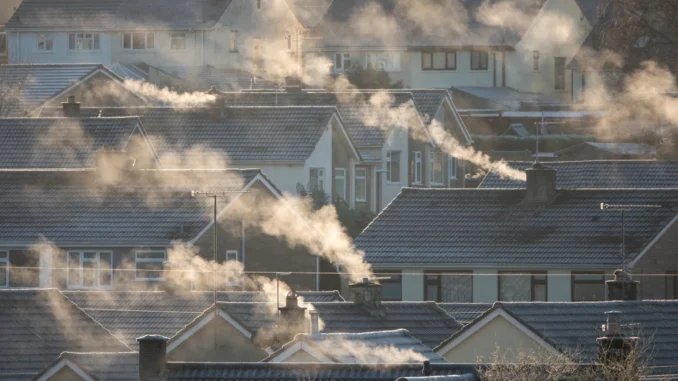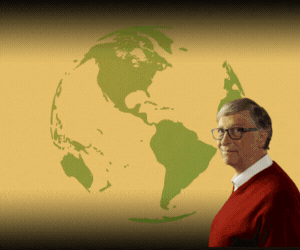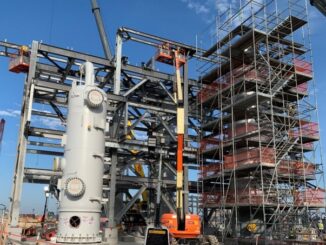
As the Northern Hemisphere braces for winter, a familiar narrative is flipping on its head. For years, discussions around climate have centered on global warming and its implications for milder winters. But emerging weather forecasts paint a different picture: a weakening polar vortex is poised to unleash frigid air across the US, Asia, and parts of Europe, driving up energy demand and heating costs just as consumers grapple with economic pressures.
This shift not only challenges the “warming” storyline but also spotlights the resilience of natural gas as a critical energy source amid unpredictable cold snaps. I find this humorous with the COP30 meeting in Brazil. With Bill Gates now saying that climate change is not the existential threat we have been led to believe, we should focus on saving humanity from energy poverty.
Do you live in a high-tax state? Or do you have a Tax Burden in 2025?
The Polar Vortex: A Chilling Forecast for Winter 2025-2026
Meteorologists are sounding the alarm on the polar vortex—a massive band of winds encircling the Arctic that typically keeps cold air locked in place. Signs point to its potential weakening, allowing blasts of frigid air to spill southward and trigger extreme cold events.
Unlike last year’s record-warm winter, which saw minimal disruptions, this year’s setup could mark a stark contrast, with heightened risks starting in just weeks.
The implications are global:United States: Expect boosted power and gas costs, exacerbating heating bills for households already facing inflation.
Asia: Regions reliant on imported energy could see spikes in demand, straining supplies.
Europe: Parts of the continent may experience similar cold intrusions, pushing up energy expenses amid the ongoing recovery from previous supply shocks.
This isn’t just about bundling up; it’s about economics. Extreme cold could ramp up overall energy demand, leading to higher bills for millions.
With winter on the doorstep, forecasters warn that these patterns could translate into tangible financial pain.
Natural Gas Pricing: Trends and Winter Pressures
Natural gas markets are already reflecting anticipation of a colder season. Futures prices for the 12-month strip (December 2025 through November 2026) have climbed to an average of $4.050 per million British thermal units (MMBtu), signaling market bets on sustained demand.
Spot prices are holding around $4.33/MMBtu, supported by steady output and export surges, though not yet in full shortage mode.
Recent updates highlight a market bracing for volatility. The U.S. Energy Information Administration (EIA) projects a 56% jump in spot gas prices for 2025, driven by rising demand and exports.
Factors like record liquefied natural gas (LNG) flows and potential winter rallies are in play, with the polar vortex adding upward pressure on heating needs.
While no major shortages loom immediately, tight balances could push prices higher if cold weather materializes.
Rig Counts: Flatlining or a Strategic Plateau?
U.S. natural gas rig counts have shown consistency with modest fluctuations, recently rising to 128—the highest since August 2023—up from 125 the prior week.
Overall, oil and gas rigs ticked up to 548 as of November 7, 2025, but this follows a period of relative flatness compared to historical surges.
Year over year, gas rigs are up from 102, yet the pace suggests operators are cautious, prioritizing efficiency over aggressive expansion.
This pattern points to a maturing industry dynamic: with rigs not skyrocketing, supply growth may lag behind demand spikes, potentially leading to elevated and more constant natural gas demand. Cold weather cycles, rather than being eliminated, could become more pronounced in their impact on prices due to constrained supply responses. If polar vortex disruptions boost heating needs, this “flat” rig environment might amplify price volatility, creating a floor under demand rather than seasonal lulls.
Is This Good for Oil and Gas Investors? Key Indicators to Watch
For oil and gas investors, this setup could be a boon. Flat rig counts amid rising demand forecasts—fueled by cold weather threats—often signal higher commodity prices, boosting producer margins.
The EIA’s outlook for increased drilling in response to 2025 price jumps suggests a positive feedback loop: higher prices encourage modest rig additions, but not enough to flood the market, preserving profitability.
For consumers, this might mean stabilized or lower long-term fuel costs if supply ramps efficiently, but short-term winter spikes could sting.
Investors should monitor:Demand Forecasts: Watch EIA updates and winter weather models for polar vortex developments.
Export Growth: LNG shipments are hitting records, supporting prices amid global needs.
Commodity Prices: Track futures strips for signs of rallies into 2026.
Policy and Efficiency Trends: Shifts toward consolidation and productivity gains could favor well-positioned firms.
Overall, this environment favors investors in resilient producers and exporters, as higher energy bills translate to stronger revenues.
Stock Spotlights: Cheniere Energy, Other LNG Players, or CNX?
When eyeing investments, consider your focus—global exports or domestic production.
Cheniere Energy (LNG Leader): As the U.S.’s top LNG exporter, Cheniere stands to gain from surging international demand, especially if Asia and Europe face cold-driven shortages. Recent analyses peg it as undervalued by over 50%, with strong cash flows from long-term contracts and a recent global supply deal.
Winter 2025 outlooks are bullish, tying into export rallies and higher futures.
If polar vortex effects boost global heating needs, Cheniere’s position in the LNG chain makes it a prime pick for diversified exposure.
Other LNG Options: Broader LNG plays like competitors or midstream firms could mirror Cheniere’s upside, benefiting from U.S. export booms projected through 2026.
Look for companies with secure off-take agreements to mitigate volatility.
CNX Resources (Domestic Focus): This Appalachia-based natural gas producer is undervalued by about 71%, per discounted cash flow models, amid jumping demand forecasts.
CNX crushed Q3 2025 earnings with $1.21 per share (versus $0.40 expected) and revenue beats, bolstered by hedging and operational strength.
For investors eyeing U.S.-centric plays, CNX offers leverage to domestic price spikes from cold weather, though it’s more exposed to local volatility than global exporters.
In summary, both Cheniere and CNX present compelling cases, but Cheniere edges out for those betting on international ripple effects from the polar vortex. Diversify based on risk tolerance—LNG for global stability, CNX for high-upside domestic bets. As always, consult financial advisors, as markets remain dynamic.
If you are a regular reader of the Energy News Beat, visit with your CPA, as you may need to cover some tax deductions for next year with an investment with tax advantages.
Stay tuned to Energy News Beat for more on how these trends unfold. Winter’s chill might just heat up your portfolio.
Got Questions on investing in oil and gas? Or do you have a Tax Burden in 2025?
ENB Top News
ENB
Energy Dashboard
ENB Podcast
ENB Substack







